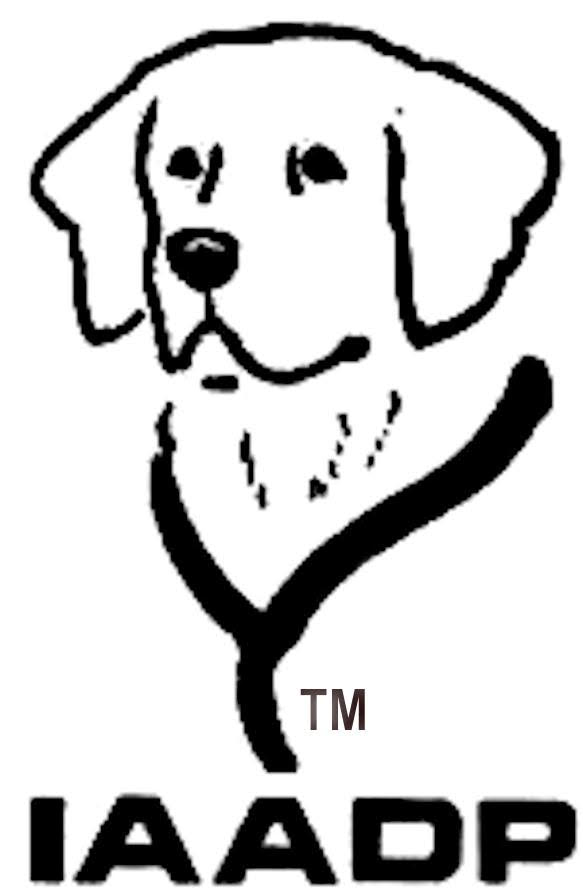Allergy detection dog
Allergy-indicating dogs learn to smell the allergy trigger in the case of a severe, life-threatening allergy and to indicate its presence in the environment. Usually these are food allergies, such as peanut allergy or gluten allergy.
If the dog has perceived an allergy trigger in everyday life, he leads the person concerned to the source to indicate the trigger. Therefore, it should not be dangerous for the person concerned to approach the trigger. If it is too dangerous for the person affected, it is necessary for a relative to take over the dog's reporting work and let the dog lead them to the trigger. If this is not possible, an allergy-signalling dog is not suitable.
For training, the person affected must know exactly what the allergy trigger is. Even with a peanut allergy there are differences: the peanut shell smells different from the peanut. Once the peanut is opened, the shell quickly loses its smell, so that the dog can no longer smell the shell after a while. If the dog was now trained only on the peanut protein, although the allergy trigger is the shell, this would be fatal and the dog would erroneously no longer be able to indicate the allergy trigger. If the allergy trigger is the peanut shell, the dog must also be trained specifically for the peanut shell and not for the protein.
During training, it is necessary for the allergy detection dog to train with the allergens. Even after training, it is necessary that the dog is repeatedly trained with the allergens in order not to unlearn the training. The assistance dog trainers of the German Assistance Dog Centre T.A.R.S.Q.® are especially trained to give you tips on how to keep and touch the allergen safely without endangering your health.
Since the dog is confronted with the allergenic smell very often during the first year of life, it is the best solution for most of the affected persons to get a fully trained allergy detection dog. The assistance dog trainers of the German Assistance Dog Centre T.A.R.S.Q.® will be happy to advise you on which option is the best solution for you.
With externally trained allergy display dogs you have the possibility to get dogs with different training levels, depending on your individual needs:
- The allergy indicator dog knows basic commands, is socialized and has learned to "scan" the environment at home for the allergy trigger.
- The allergy indicator dog knows basic commands, is socialized and has learned to find the allergy trigger outside and in public places for at least three months.
- The allergy indicator dog knows basic commands, is socialized and has learned to find the allergy trigger for at least one year also outside and in public places, like in shops, schools and trains.
- The allergy detection dog knows basic commands, is socialized, has learned for at least one year to find the allergy trigger also outside and in public places, such as in shops, schools and trains, is trained as a ready assistance dog with assistance dog standards and has learned additional auxiliary tasks in case of an anaphylactic shock, if necessary.
Tasks of an allergy detection dog
The dogs constantly search the surroundings and indicate the presence of an allergenic smell to the owner if it is present. However, if the smell is not detectable, the dog cannot report it. In this way, he can no longer perceive old smells. For example, if there is an old trace of peanut oil on a tray in the canteen, the dog cannot report it.
Allergy-signalling dogs cannot detect a substance, only an odour.
Likewise, dogs cannot warn of anaphylactic shock, only of the smell that can cause it. However, if desired, the dog can learn additional tasks to help in the event of an anaphylactic shock: bringing relatives to help in the same apartment; bringing a telephone to call for help; bringing medication or calling for help via an emergency telephone.
Requirements for an allergy detection dog
- You suffer from an anaphylactic allergy and have had anaphylactic reactions in the past after direct contact with the allergy trigger.
- You should be prepared to continue training the dog at least once a week after the training.
- You must be prepared to let the dog lead you to the allergy trigger or let a relative take over this task.
- Children should be old enough to be able to support the dog in his training and not to panic when they are near an allergy trigger.








